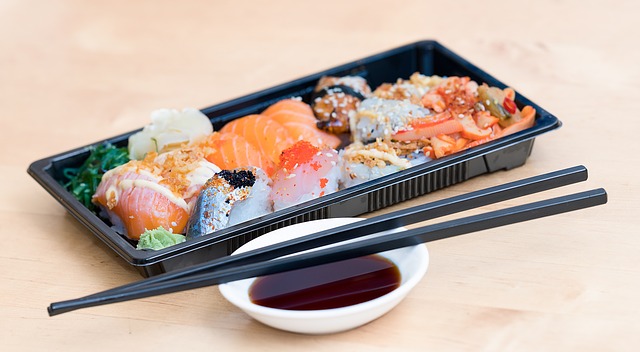Amazing Japanese sauces and seasonings to spice up your dining
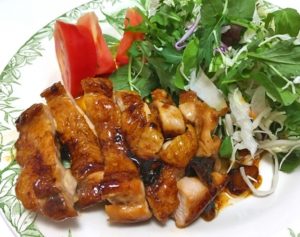
Japanese sauces and seasonings are diverse. Sometimes spicy, sometimes sweet, sometimes savory, sometimes interesting but delicious...
Some Japanese dishes cannot be imagined without sauces. Also, even if the food itself may be already delicious, Japanese sauces and seasonings add extra flavor to your delicacy, making it even tastier and look gorgeous.
For many of you, Japanese condiments are probably a mystery. But just pick one whichever attracts you and see how it tastes! You will have a Japanese dining experience even you are away from Japan.
1.Tonkatsu sauce
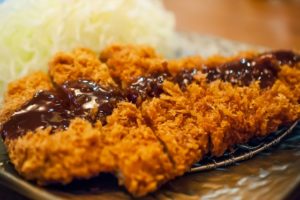
First of all, Tonkatsu is a Japanese pork cutlet with a pork chop battered and deep-fried. Tonkatsu sauce was invented just for that dish. It tastes a little bit sour, but you can feel a little bit of sweetness of fruits contained in the sauce. Compared to other sauces, this sauce is made a bit thicker and sweeter so that it perfectly matches Tonkatsu. You can pour this sauce any other deep-fried dish as well.
2.Yakiniku sauce
Yakiniku is any types of sliced, one-bite size meat grilled on gridirons, griddles, or pans. You can enjoy grilled meat by itself or with salt, but whenever the Japanese people have yakiniku, this sauce is always on the table. It is usually made with soy sauce, miso, sugar, vegetables, fruits and some spices, tasting spicy and a little salty.
You can use this sauce not only for yakiniku but also other types of dishes. For example, stir-fried or grilled vegetables seasoned with yakiniku sauce is wonderful.
3.Yakisoba sauce
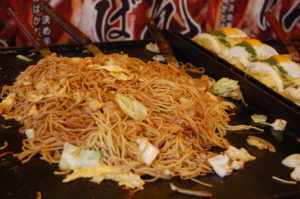
Yakisoba is a kind of noodle dish cooked with vegetables and pork. As the name indicates, yakisoba sauce was created for yakisoba, so you cannot imagine yakisoba without this sauce!
It has a brown color, and a thin texture so that noodles catch the sauce well. Once you pour this sauce over cooked noodles, vegetables and pork, it makes a great meal full of flavor.
4.Okonomi sauce

Okonomi sauce is a sauce for Okonomiyaki, which is a Japanese pancake-like dish made with batter, cabbage, meat, and seafood. It is brown and rich and tastes a bit sour and sweet. It resembles tonkatsu sauce, but in fact, these two are different. Unlike tonkatsu sauce, okonami sauce contains bonito broth, making the sauce perfect for okonomiyaki(the batter of okonomiyaki contains bonito broth, too). When okonomiyaki is cooked, this sauce is put and spread all over the surface of the dish, often mayonnaise added.
5.Takoyaki sauce

Now you have learned how much the Japanese invented sauces specialized for a particular dish. Takoyaki, a famous Osaka dish was no exception. Takoyaki sauce is made based on okonomi sauce, but has thinner texture and contains soy sauce.
6.Teriyaki sauce
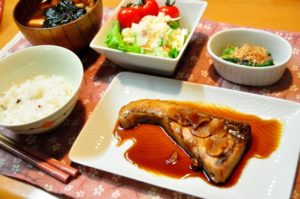
Teriyaki sauce now can be found around the world. It is a brown, rich, sweet, and savory sauce that goes great on any types of dishes. It is made with soy sauce, mirin (Japanese rice sake), sugar or honey, heated in a pan until it becomes thick and rich. Probably this sauce is the easiest Japanese sauce you can make at home.
In Japan, this sauce is used for a wide variety of dishes, such as cooked fish, Japanese-style hamba-gu (hamburger without buns), grilled chicken, and so forth. Also, menus using teriyaki sauce at restaurants and snacks with teriyaki flavor are common.
7.Chuno sauce
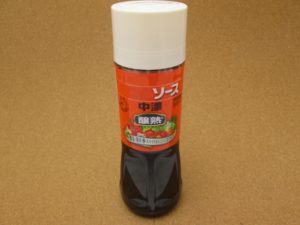
Chuno sauce is a familiar sauce in Kanto region (the Eastern part of Japan), which has an excellent mixture of spiciness and sweetness. This sauce is made with vegetables, fruits, vinegar, and more than ten kinds of spices. It is similar to Tonkatsu sauce, but this sauce is less thick and sweet.
This sauce goes well on not only deep-fried dishes but also any other types of food. People in the Kanto area substitute this sauce for other specially invented sauces such as takoyaki, okonomiyaki, and yakisoba.
Even if you don't have chuno sauce, there are ways to make the substitute for it. The easiest one is using Worcester sauce by itself, or you can mix tonkatsu sauce, vinegar, and ketchup in the 3-1-1 ratio.
8.Ponzu sauce
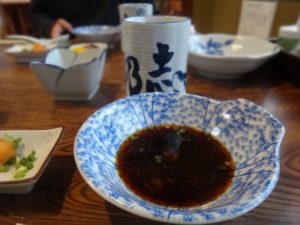
Ponzu is a citrus-based sauce with a think, watery texture and dark brown color. This sauce is made with soy sauce, citrusy fruit juice such as lime or lemon, and vinegar, making a tart taste.
Ponzu sauce is commonly used for cooking in Japanese households due to its wide varieties of use. By itself, it goes well on grilled fish, grilled meat, and can be used as a dipping sauce for hotpot dishes. When mixed with grated daikon radish, it makes a great dipping sauce for grilled fish. When mixed with oil and vinegar, it is transformed into the Japanese-style dressing.
9.Syo-yu (Soy sauce)
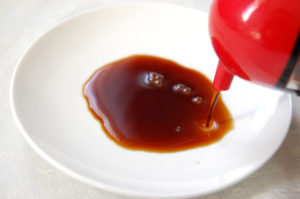
It is not too much to say that you cannot live without soy sauce in Japan. It is used not only as a sauce but also as a seasoning. In fact, almost all the Japanese dishes are seasoned with soy sauce, and it is one of the basic ingredients for making other sauces such as, what you already know, ponzu, teriyaki sauce, takoyaki sauce, and so on. When used by itself as a sauce, it is what makes sushi and sashimi genuine sushi and sashimi.
Soy sauce is sold worldwide these days, found even at local supermarkets in other countries. You don't have to go to Asian grocery stores to get soy sauce anymore!
10.Mentsuyu
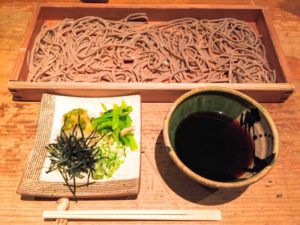
Mentsuyu is a flavorful Japanese condiment made with soy sauce, dashi (traditional Japanese seasoning made from bonito/kombu kelp), mirin, and sugar. Mentsuyu has a slightly salty, sweet taste, and the flavor of dashi makes your dish much flavorful. It is often used as a dipping sauce for noodles like soba and udon, enhancing the flavor of noodles. It is also used as a seasoning for typical Japanese dishes such as tamagoyaki (egg omelette), tempura, agedashi-dofu (tofu coated with thin batter, deep-fried), or simmering dishes.
11.Karashi
Karashi is Japanese mustard, but it is different from the Western mustard. While the Western's is made of yellow mustard seeds, karashi is made of oriental mustard seeds, making it spicier than the Western one. It is used to spice up dishes such as hotpot dishes, Chinese dumplings, and natto(fermented soy beans). If you are looking for a hot seasoning other than wasabi, karashi will be the best choice.
12.Wasabi
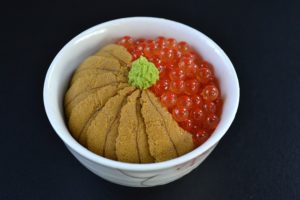
Wasabi, or Japanese horseradish is another hot condiment and consumed more often than karashi. It often accompanies food such as soba, sashimi or sushi, and is either mixed with a dipping sauce or directly put on the food. Wasabi is spicy, but greatly enhances the taste of food.
13.Ichimi togarashi
Ichimi togarashi is a hot spice, which is made of solely from the powdered chili pepper. If you are craving for something hot in your food, just add this. You can use it for whatever dishes you want, such as pizza, curry, deep-fried chicken, or ramen.
If you want some spiciness but not want it to be too hot, Shichimi togarashi will do. Shichimi is made from seven kinds of spices like hot chili pepper, ginger, and sesame, and tastes less spicy. It goes well particularly on typical Japanese dishes such as gyudon, miso soup, tempura, or soba.
14.Sansho
Sansho is the Japanese prickly ash, which has been used in various ways in Japanese cuisine. Every part of the plant is used differently, for example, leaves are used as a garnish for grilled/simmered dishes, and unripe fruits are cooked and eaten with rice. The most common use of sansho is a spice and seasoning. The peels of sansho fruits are dried and ground and sprinkled on many types of dishes as the person's preference. Typical dishes eaten with sansho are broiled conger eel and Japanese noodle dishes.
15.Ra-yu
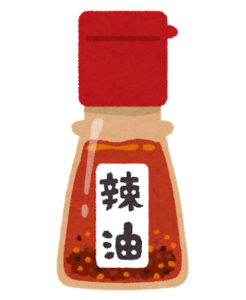
Ra-yu is a condiment originated from China, made by heating spices such as hot chili pepper in the oil to extract the spiciness. In Japan, it is typically mixed with soy sauce to make a dipping sauce for Chinese dumplings but also used by itself to spice up other dishes such as ramen.
16.Goma-dare (Sesame sauce)
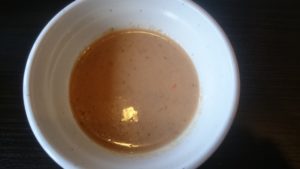
Goma-dare is a thick sesame sauce which has a rich, savory flavor of roasted sesame. Varieties of goma dare exist in Japan. The thinner version is produced as a type of dressing, and the thicker version is produced as a dipping sauce for hotpot dishes. The rich sesame flavor makes even a simple salad fantastic and gorgeous.
17.Wa-fu dressing
Wa-fu means "Japanese-style," so wa-fu dressing is a vinaigrette-type Japanese style dressing. Different companies produce different wa-fu dressing with different ingredients, but the basic ingredients for this dressing include soy sauce, oil, and vinegar. Additional flavor is added by shiso, wasabi, yuzu citrus fruit, Japanese plum, or ginger. It can be used not only for salads but also grilled meat or grilled fish.
18.Miso
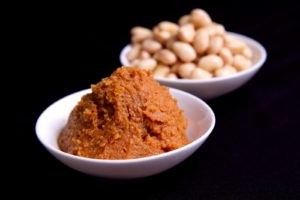
Miso is a traditional Japanese paste-type seasoning made by fermenting soybeans and mixing them with yeast and salt. It is typically used to make miso soup but also used as a seasoning or a sauce, mixed with other condiments/seasonings such as sugar or dashi. Common delicacies using miso are misonikomi-udon from Aichi prefecture, miso ramen, miso oden (a type of hotpot dish), and gohei mochi. In the summertime, fresh cucumbers are eaten with a miso dip.
19.Mayonnaise

Japanese people do love mayonnaise. They put it on any types of dishes- salads, Chinese dumplings, okonomiyaki, takoyaki, boiled eggs, deep-fried dishes... some people use it for even french fries! Those who are into mayonnaise are called "mayo-ler."
20.Furikake
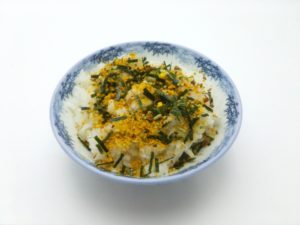
Furikake is a freaky seasoning. Furikake means "to sprinkle," and it was initially invented to be used as a seasoning for rice, so furikake is usually eaten with rice. But some people do experiments if it goes well with other dishes, and pasta and salads using furikake got popular recipes.
Furikake comes in so many different flavors. Familiar flavors include bonito, egg, salmon, cod roe, and shiso. Since it is cheap, widely available, and preserved for a long period, it makes a great souvenir back to home.
Try Different Japanese Sauces and Seasonings!
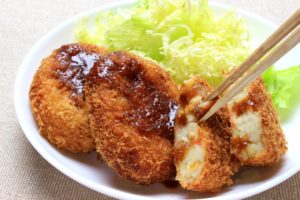
Most of the items above are not familiar to you, but they will expand the ways of enjoying dishes. You may get some of them at a supermarket nearby or almost all of them online, and of course, you can make them on your own.
Enjoy your dining with delicious Japanese sauces and seasonings!
